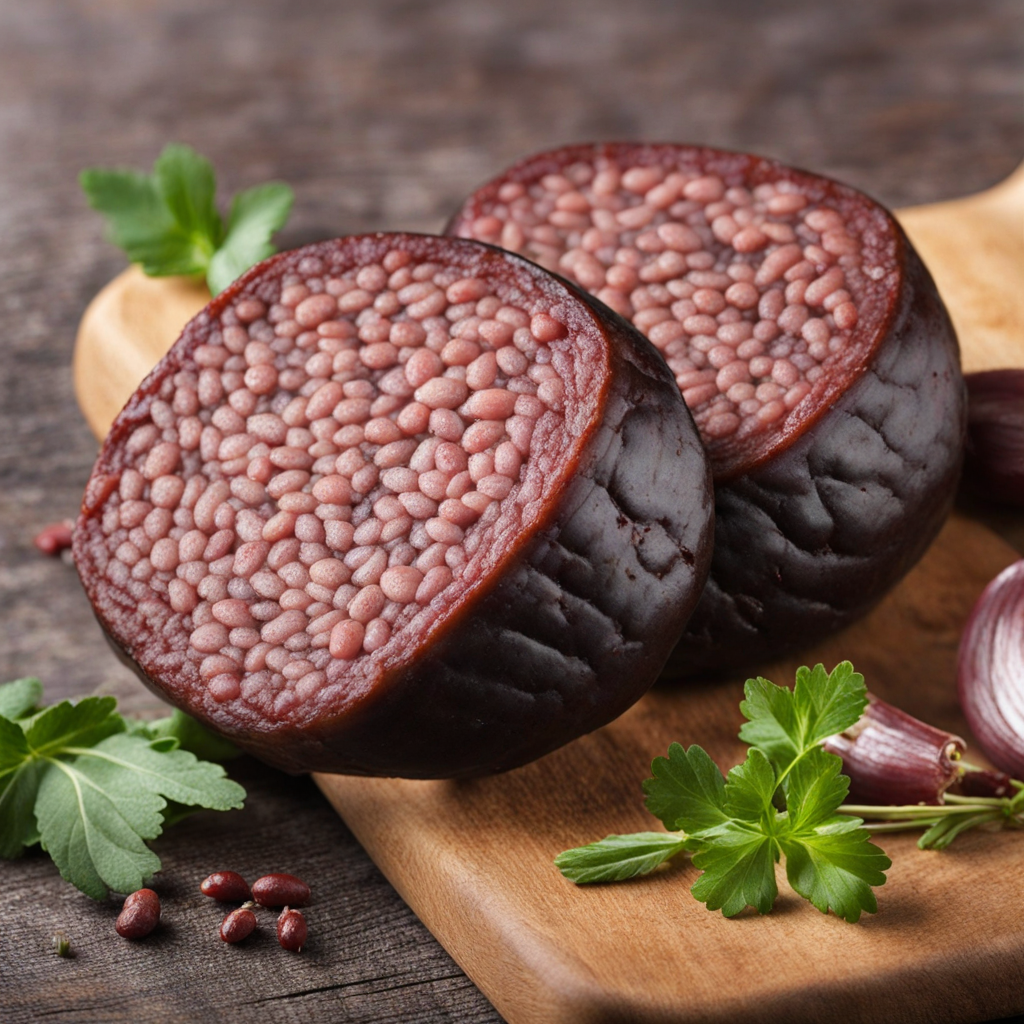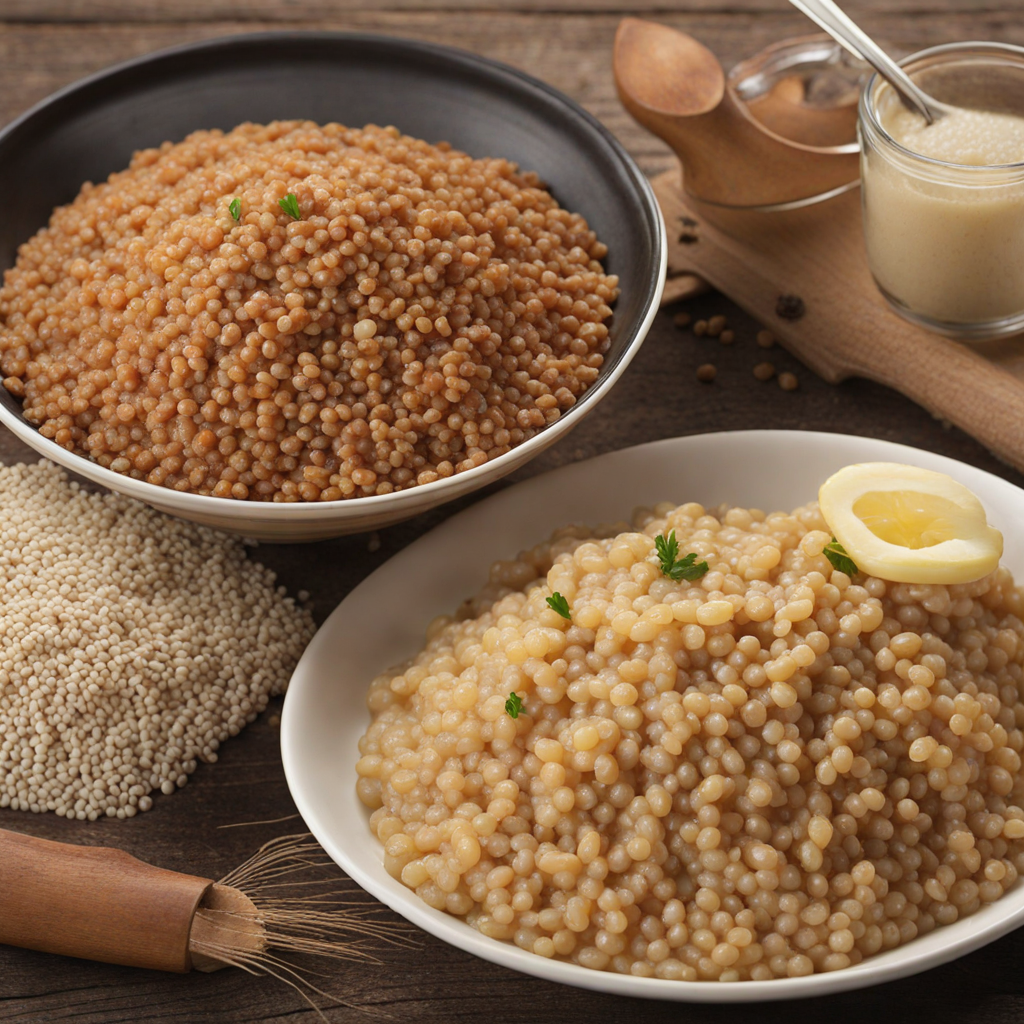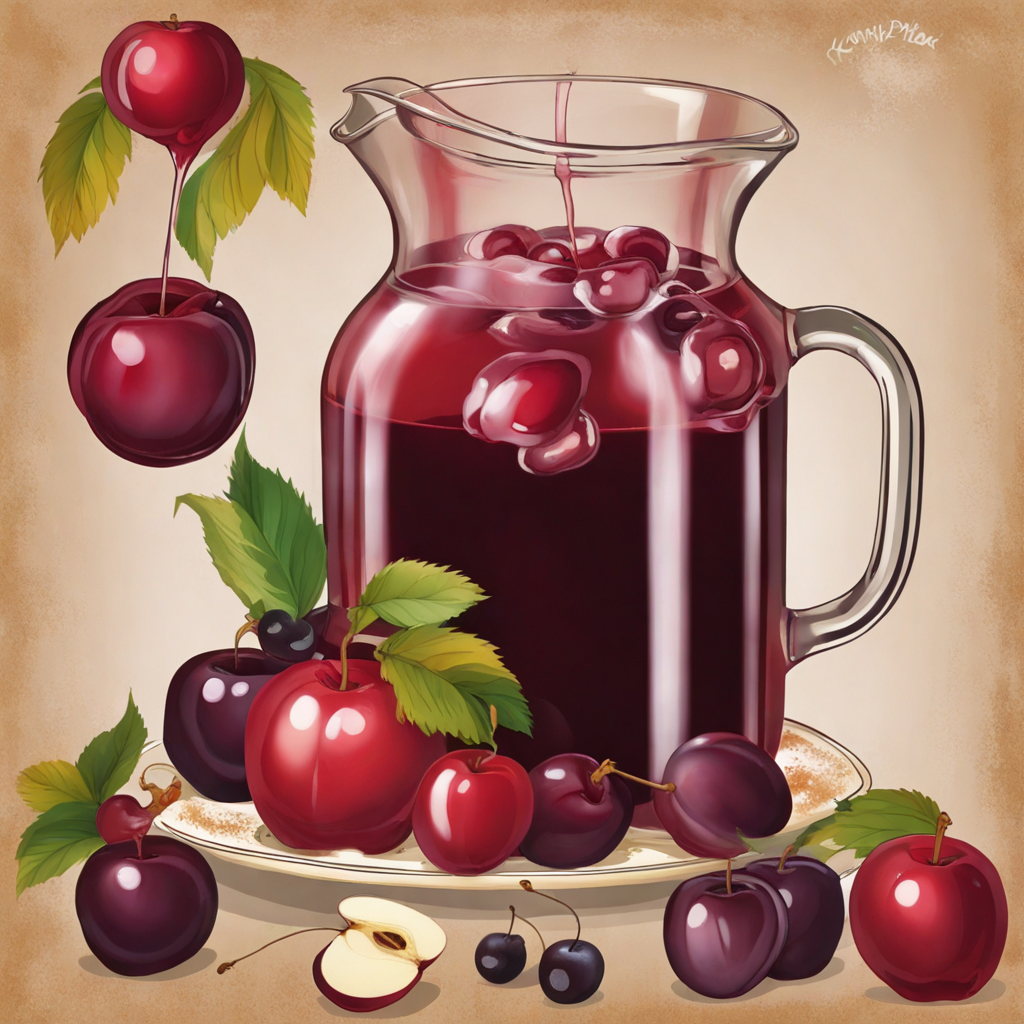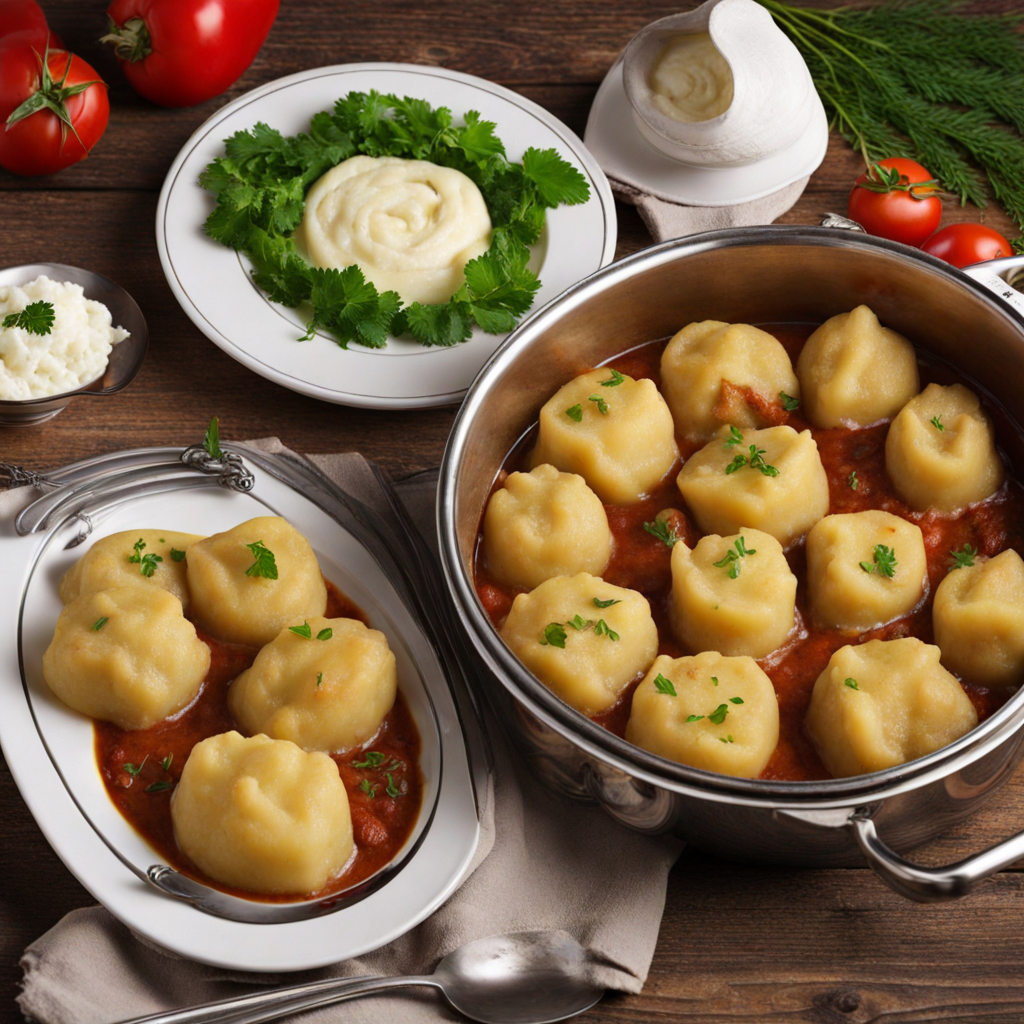Kiszka
Kiszka, a traditional Polish delicacy, is a type of blood sausage that embodies the rich culinary heritage of Poland. Made primarily from pork blood, barley, or buckwheat, and an array of spices, Kiszka is a savory dish that showcases the resourcefulness of Polish cuisine. The combination of these ingredients is stuffed into natural casings, creating a robust sausage that is often enjoyed grilled, boiled, or fried. The texture is hearty, with a satisfying chew that invites you to savor each bite, while the earthy flavors of the blood and grains intermingle with the spices, creating a unique taste profile that is both savory and slightly sweet. Traditionally, Kiszka is served with a variety of accompaniments that enhance its flavor. Popular pairings include sautéed onions, sauerkraut, or pickles, which add brightness and acidity to balance the richness of the sausage. In many Polish households, Kiszka is a staple during festive occasions, often featured in holiday feasts or family gatherings. It is not just a dish, but a cultural experience, connecting people to their roots and celebrating the communal aspect of dining. The preparation itself can be a family affair, where generations come together to create this beloved dish. For those looking to discover new flavors, Kiszka offers an adventurous yet comforting culinary experience. Its distinct taste can be a revelation for those unaccustomed to blood sausages, as its seasoning and texture provide a depth of flavor that is both satisfying and intriguing. Whether enjoyed on a cold winter’s night or as part of a summer barbecue, Kiszka invites food lovers to explore the rich tapestry of Polish cuisine, making it a must-try for anyone eager to expand their palate.
How It Became This Dish
Kiszka: A Culinary Tradition of Poland Kiszka, a traditional Polish dish, is more than just a meal; it is a rich symbol of Polish heritage, reflecting the agricultural lifestyle, regional diversity, and culinary ingenuity of the Polish people. Made primarily from pig's blood, rice or buckwheat, and a variety of spices, kiszka has evolved over centuries, embodying the spirit of communal cooking and seasonal festivities. #### Origins of Kiszka The roots of kiszka can be traced back to ancient Slavic cultures, where the practice of blood sausage-making was common. The term "kiszka" itself is derived from the Old Slavic word "kys," meaning "to ferment" or "to sour." Early versions of the dish were likely created as a means of preserving meat in a time when refrigeration was absent. Blood sausages were a practical solution for utilizing all parts of the animal, particularly during the butchering season in autumn. The preparation of kiszka typically involved mixing fresh pig's blood with grains—such as rice, barley, or buckwheat—and spices like salt, pepper, and marjoram. The mixture would be stuffed into cleaned intestines or, in some regional variations, into cases made of artificial casings or even vegetables. This method not only preserved the meat but also enhanced its flavor, allowing families to enjoy hearty meals throughout the long, harsh winters. #### Cultural Significance Kiszka holds a significant place in Polish culinary traditions, often associated with communal gatherings and family celebrations. It is commonly prepared during festivals, particularly during the harvest season and around Christmas. In rural areas, kiszka is a staple dish served during special occasions such as weddings, funerals, and feasts. The preparation of kiszka is often a communal activity, with family members coming together to participate in the butchering process and the subsequent making of the sausage. This practice reinforces bonds within families and communities, as the preparation of kiszka is often accompanied by storytelling, laughter, and the sharing of recipes passed down through generations. In addition to its communal significance, kiszka also embodies regional variations that highlight local agricultural practices. Different regions of Poland have their own takes on kiszka, influenced by the availability of ingredients and local tastes. For instance, in the Silesian region, kiszka might be made with potato and served alongside sauerkraut, while in the Mazury region, it may be flavored with herbs and served with pickles. #### Development Over Time As Poland underwent various historical changes—from partitioning and wars to communism and the subsequent transition to democracy—the culinary landscape of kiszka evolved as well. During the partitions in the late 18th century, when Poland was divided among Prussia, Russia, and Austria, the dish became a symbol of national identity. It served as a reminder of Polish resilience and the importance of preserving cultural heritage during times of political strife. In the 19th century, kiszka also began to attract the attention of the upper classes, who sought to elevate traditional dishes by incorporating finer ingredients and sophisticated cooking techniques. This marked the beginning of kiszka's transition from a homely peasant dish to one that could grace the tables of the aristocracy. Recipes began to appear in cookbooks, showcasing variations that included additional spices and gourmet accompaniments. The 20th century saw further changes with the advent of industrialization and urbanization. As people moved to cities for work, traditional cooking methods began to wane, and kiszka was often replaced by quicker, more convenient meals. However, the post-World War II era brought about a revival of interest in traditional Polish cuisine as a way to reconnect with cultural roots. This resurgence highlighted kiszka's role in Polish identity and culinary heritage. Today, kiszka is experiencing a renaissance, as chefs and food enthusiasts alike are rediscovering traditional recipes and techniques. Modern interpretations of kiszka may include variations such as vegetarian or vegan options, reflecting contemporary dietary preferences while still honoring the essence of the dish. Artisanal producers are also emerging, creating small-batch kiszka with locally sourced ingredients, further revitalizing the dish's status in Polish gastronomy. #### Kiszka in Contemporary Poland In contemporary Poland, kiszka is celebrated not only as a traditional dish but also as a representation of national pride. Festivals dedicated to kiszka are held in various regions, where locals showcase their unique recipes and preparation techniques. These events attract both locals and tourists, fostering a sense of community and cultural exchange. Moreover, kiszka has made its way into the global culinary scene, with Polish restaurants in cities around the world featuring the dish on their menus. Chefs are experimenting with new flavors and presentations, blending traditional kiszka with international culinary trends. This fusion not only keeps the dish relevant but also introduces it to new audiences, ensuring its place in the global culinary landscape. #### Conclusion Kiszka is more than just a dish; it is a testament to Poland’s rich culinary history and cultural heritage. From its humble origins as a means of preserving food to its status as a symbol of national pride, kiszka embodies the resilience and creativity of the Polish people. As it continues to evolve in response to modern tastes and trends, kiszka remains a cherished part of Poland’s gastronomic identity, connecting generations through shared memories and communal cooking traditions. Whether enjoyed at a festive gathering or a family meal, kiszka serves as a delicious reminder of Poland's rich culinary tapestry and the enduring importance of food in cultural identity.
You may like
Discover local flavors from Poland







